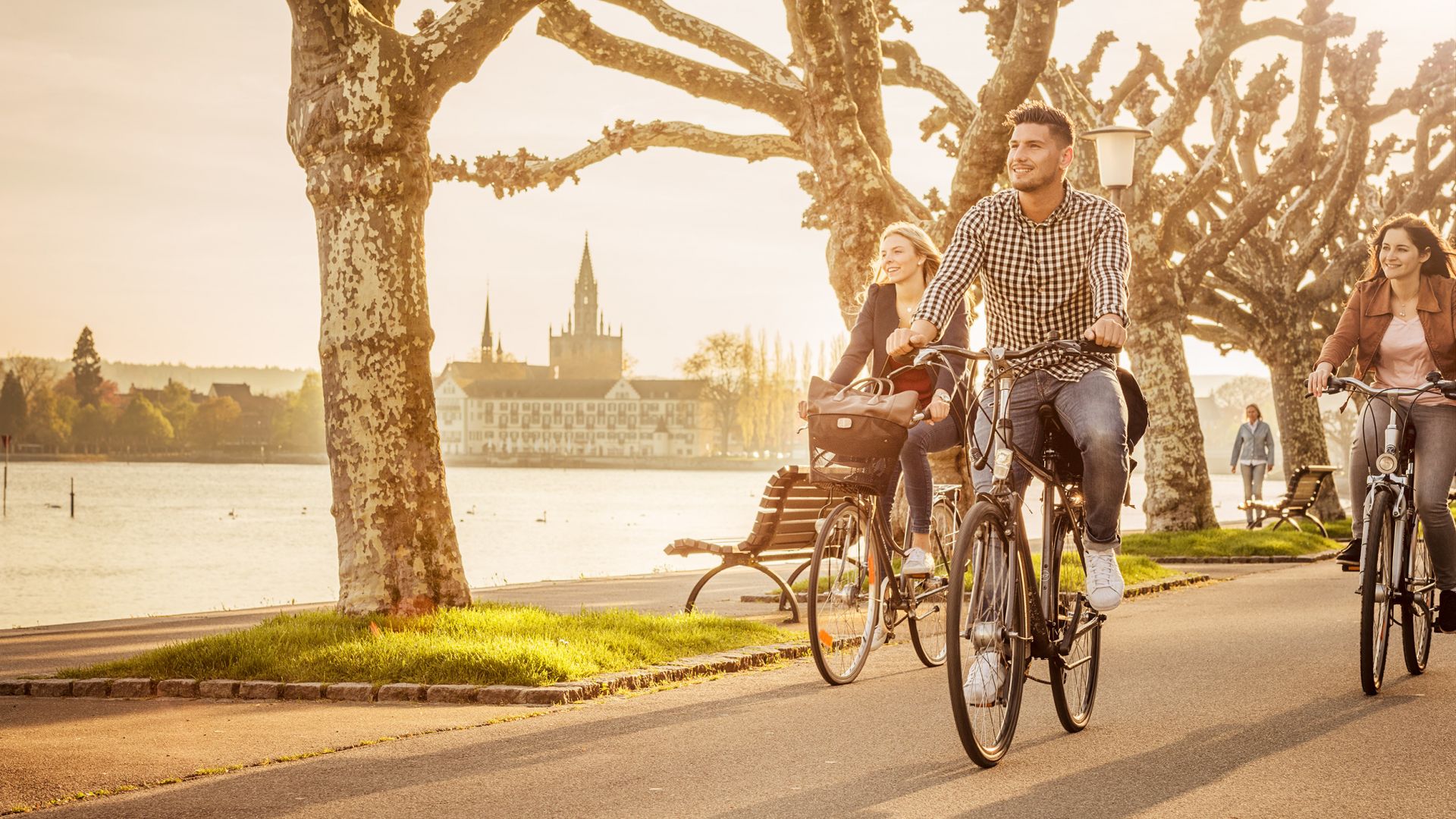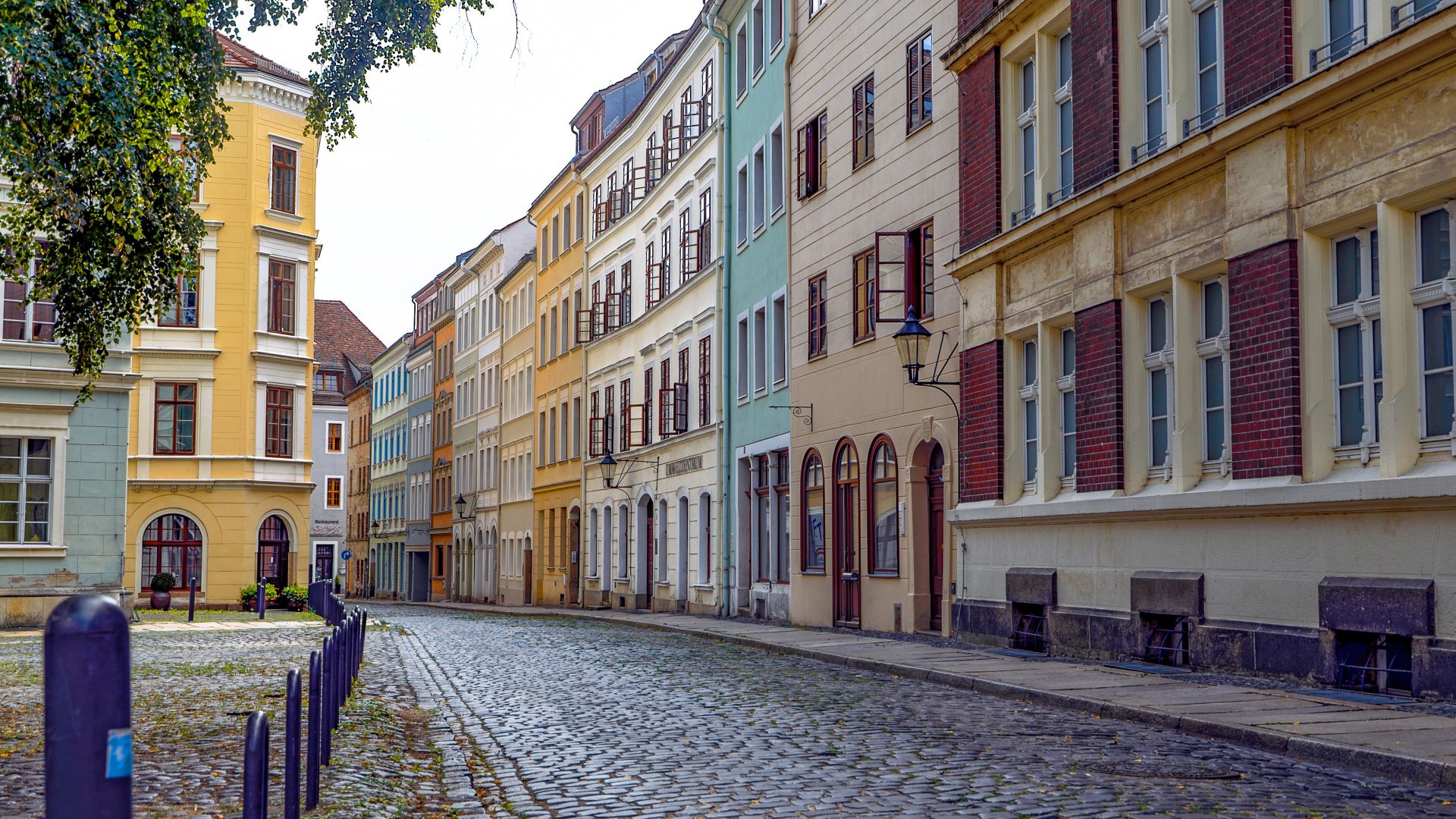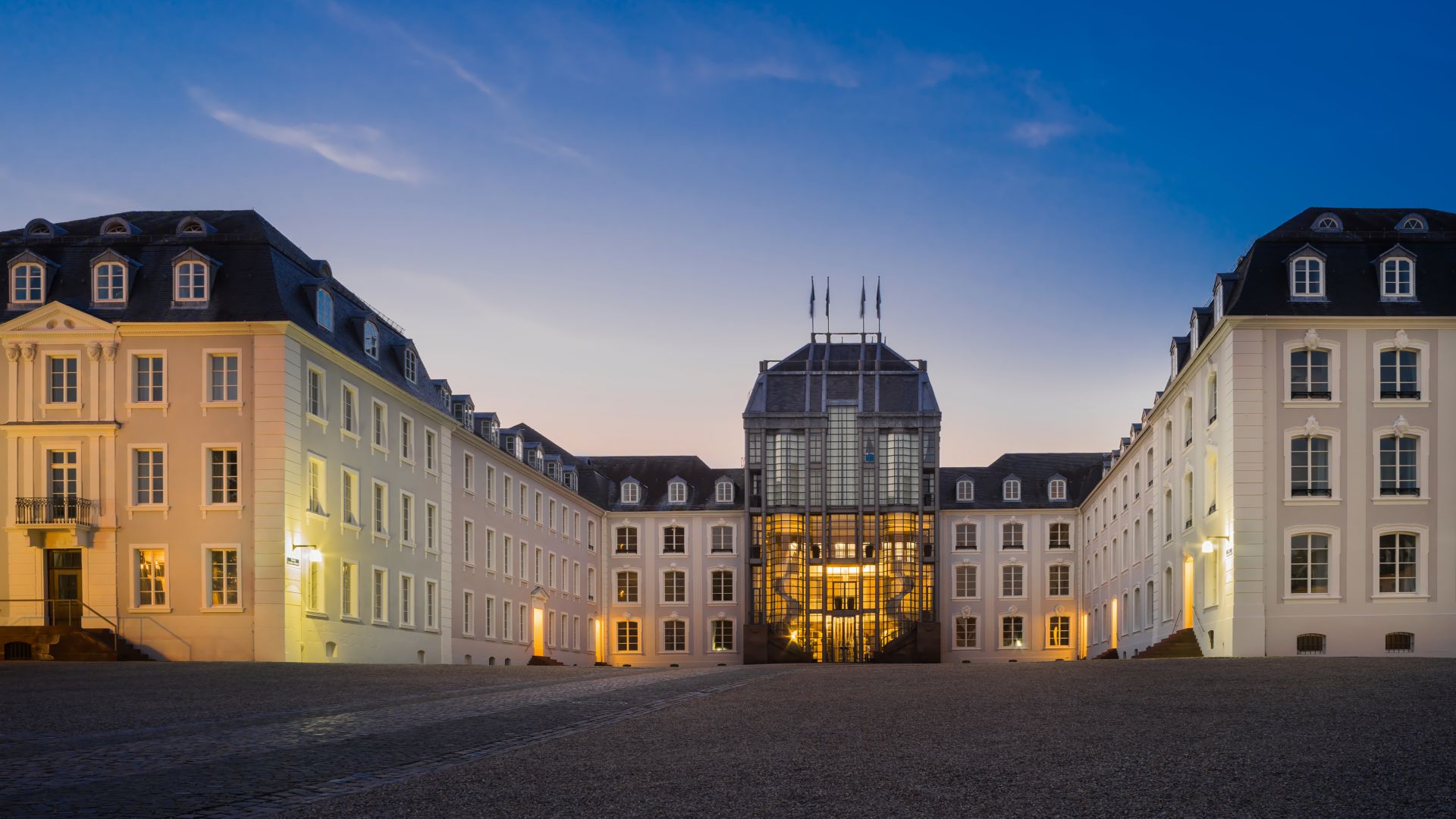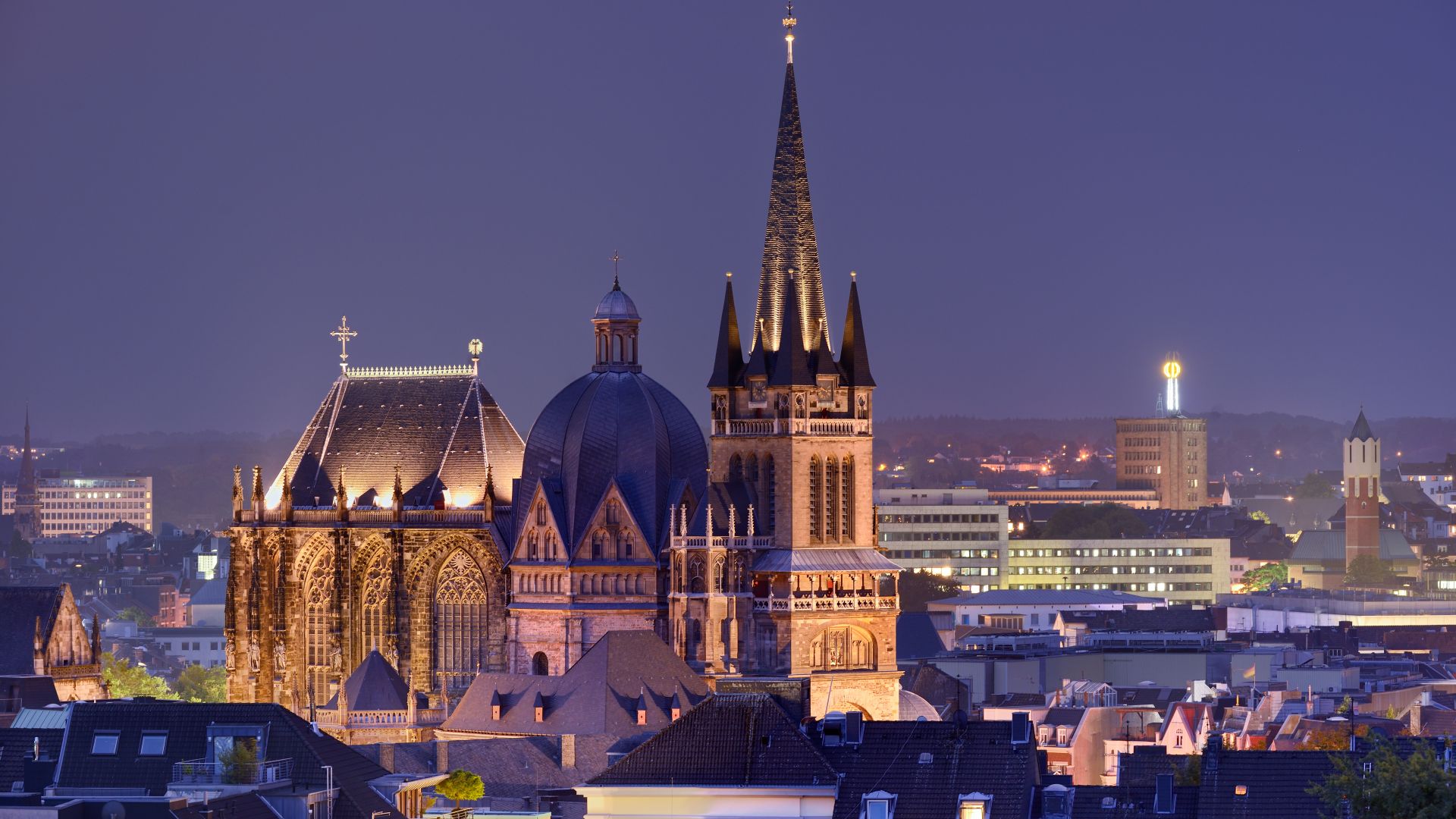Cities & Culture
Cities on the border: rubbing shoulders with European neighbours
In an open Europe, neighbouring countries ensure a constant cultural exchange. Things were quite different in times gone by, such as during the Iron Curtain era, where many a town could well be sidelined because of its close proximity to the border.
Constance: must-sees on Lake Constance
 Constance: Cycling trip along the lake
©Marketing & Tourismus Konstanz (Dagmar Schwelle)
Constance: Cycling trip along the lake
©Marketing & Tourismus Konstanz (Dagmar Schwelle)
Do away with fences and walls! Johannes Dörflinger from Constance, who created the world's first "art border" with 22 giant tarot sculptures in 2007, provided proof that borders could be designed differently too. These run right along the Swiss-German border and have brought the already-close towns of Kreuzlingen and Constance even closer together. Thanks to its location on Lake Constance Austria (and Liechtenstein, further in the countryside) can also be reached quickly by ferry, or via the popular Lake Constance Cycle Path, completing the quartet of countries. But why would you leave the largest city on the lake, where a pope was even elected at the Council of Constance in 1417? With its pretty Old Town and fine museums, there are plenty of reasons to stay. And if you are still looking for reasons to climb the 193 steps up to the viewing platform of the magnificent cathedral: the view of the Rhine, the Alps and Lake Constance is simply exhilarating. It's also definitely better to see the nearby flower island of Mainau from close up.
Görlitz: where Germany awakens
 Görlitz: Cobblestoned street in the Old Town
©AdobeStock (luhmediaart)
Görlitz: Cobblestoned street in the Old Town
©AdobeStock (luhmediaart)
Since ancient times, humankind has attempted to tame time. One such attempt is linked with Germany's easternmost city. The 15th meridian runs through the small town on the Lusatian Neisse, which is commemorated by a granite globe in the town park. To be more precise, the standard time calculation in the German Empire was established here in 1893: "Görlitz Time", the predecessor of Central European Time (CET). Görlitz is still the only city where the sun actually peaks at 12 noon sharp. However, times were not always sunny, especially after the Second World War. Although the city was spared from bombing, it was not spared from division, and was split in two, one part Saxon and one part Polish. Today, the inhabitants of Zgorcelec regularly cross the Bridge of Friendship, and "Görliwood" is practically a pilgrimage site for Hollywood directors such as Quentin Tarantino. The reason: the cinematic Old Town with house façades dating from the Renaissance, Baroque, Wilhelminian and Art Nouveau periods. More than 100 films have already been shot among these approximately 4,000 architectural monuments. You can also do a few laps around the world's first ever roundabout. Once again, in 1899 the people of Görlitz were ahead of their time.
Saarbrücken: sweet delights and baroque buildings
 Saarbrücken: Saarbrücken Castle at dusk
©Adobe Stock (Fotoschlick)
Saarbrücken: Saarbrücken Castle at dusk
©Adobe Stock (Fotoschlick)
Some rankings are not earth-shattering, but they are kind of sweet. In any case, there is a list of "sweetest cities in Germany", in which the most bakeries and confectionaries per 1,000 inhabitants is identified, and Saarbrücken is at the top. In addition to regional classics like the "Krimmelkuche", this is probably also due to the many French delicacies like eclairs and mille-feuille. Because of its proximity to the French border, it's increasingly common to see these on offer in cafés – above all at the central St. Johanner Markt. In any case, French style is in the air – which is quite understandable, given the Saarland's turbulent history. Mind-boggling: residents born before 1945 have changed their nationality four times! Friedrich Joachim Stengel was born much earlier. Then, in the mid-18th century, as court architect to the princes of Nassau-Saarbrücken, he gave the medieval Old Town complex on both banks of the Saar a baroque makeover that characterises the town even today. Located next to Saarbrücken Castle, the historically-significant Ludwigskirche is a real delight, and forms a unique ensemble with the surrounding palace and civil servants' houses.
Aachen: heaps of history in the tri-border region
 Aachen: Aachen Cathedral illuminated in the evening
©DZT (Francesco Carovillano)
Aachen: Aachen Cathedral illuminated in the evening
©DZT (Francesco Carovillano)
The westernmost city of Germany has two close neighbours: Belgium and the Netherlands. Liège and Maastricht are only a stone's throw away – even a walk through the nearby Eifel National Park would take you longer. So there is a wide choice of excursion destinations, with the tri-border point on the 322-metre Vaalserberg being particularly popular. History buffs will discover more than enough within the city alone, which is also known for its millennia-old spa tradition, from the historic Town Hall to the classicist Elisenbrunnen fountain. Charlemagne, who shaped an entire era as King of the Frankish Empire and Roman Emperor, left many traces. Aachen was not only the favourite palace of Europe's most powerful man at that time –it is also where he was buried, in a magnificent shrine in the middle of the impressive Aachen Cathedral. Together with the neighbouring Cathedral Treasury, which is considered the most important church treasury north of the Alps, it was the first monument on German soil to be awarded UNESCO World Heritage status.